What Is Michigan’s State Bird? When It Was Decided
Last Updated on
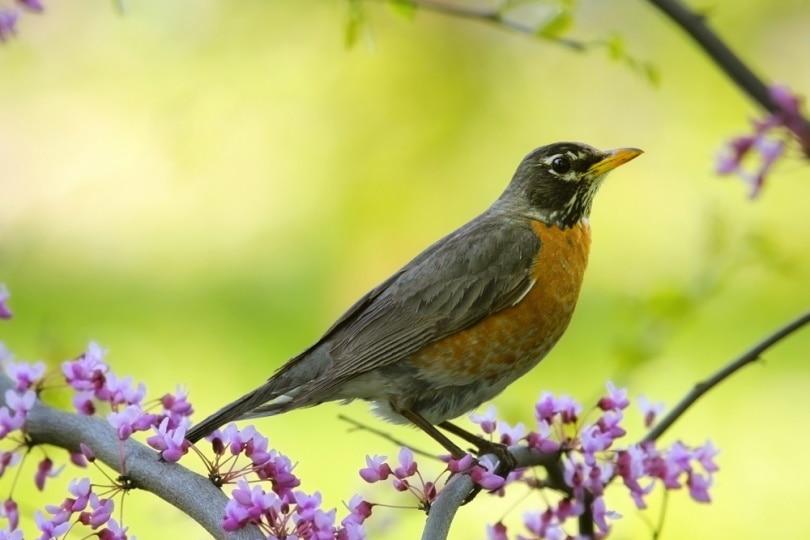
While Michigan is home to over 691 animal species and is the sixth-most forested state in the country, their state bird is one that you can easily find regardless of where you live. So, what is the state bird? Michigan’s state bird is the American Robin (Turdus migratorius).
This is a common, widespread bird throughout the US and is one that many homeowners have come to love. They’re often the first birds to wake you up in the morning and can usually be seen hopping through your yard with a worm in their bills.
American Robins, sometimes called the Robin Redbreast, have also been selected as the state birds of Connecticut and Wisconsin. What’s so special about these birds? Keep reading to find out.

American Robin: An Overview
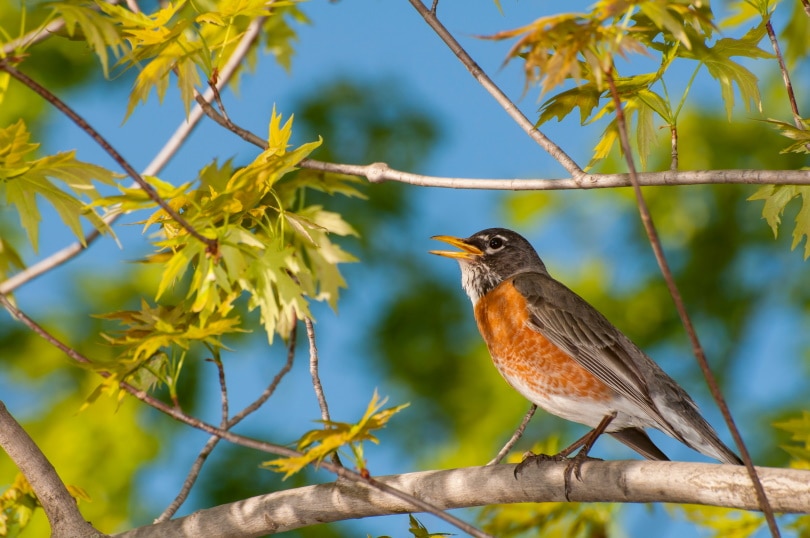
| Names | American Robin, Robin Redbreast |
| Scientific Name | Turdus migratorius |
| Habitat | Yards, gardens, parks, and woodlands |
| Length | 8.5–11 inches |
| Weight | 2.3–3.0 ounces |
| Wingspan | 12–16 inches |
Background of the American Robin
The American Robin was first named by early settlers. These setters found that the red breast of the robin looked similar to another bird species from Europe. While these birds had similar markings, they weren’t related to one another.
These birds are now the most widespread thrush in all of North America. This is because they quickly adapted to human-made habitats. Today, they can be spotted in most backyards across the country.
When Did the Robin Become Michigan’s State Bird?
The Michigan legislature adopted the American Robin as its state bird on April 8, 1931. An election was held by the Michigan Audubon Society. After much discussion, the legislation said that “the Robin Redbreast is the best known and best loved of all the birds in the state of Michigan.”
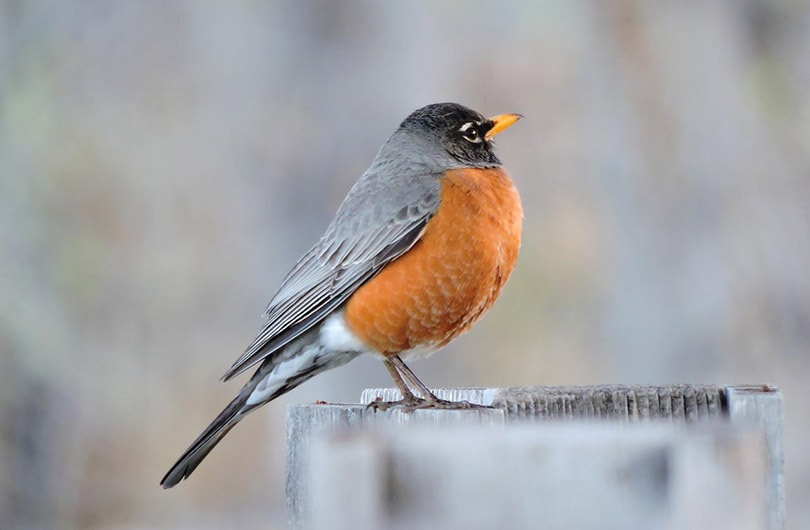
Has Michigan Tried to Change Its State Bird?
Even though Michigan’s state bird has remained the American Robin for almost a century, there has been some pushback about what the state’s official bird should be.
In 2003, a group of elementary school children arrived at the state capital to lobby for a new state bird—the Kirtland’s Warbler. Don’t let these kids’ age and small size fool you. Their reasons for wanting the change made a lot of sense.
The Kirtland’s Warbler is one of the rarest warblers in North America. Thankfully, they have slightly recovered from near extinction. What does this have to do with Michigan? Well, these birds nest exclusively in this state.
Michigan’s dry, sandy soil is the perfect habitat for jack pine trees. Kirtland’s Warblers can’t live without these trees. They only nest in young jack pines that are between 5–20 years old. On the other hand, American Robins can be found pretty much anywhere in the country. While they didn’t end up changing the state bird, it’s understandable why some people believe there is a better option.

What Do Robins Look Like?
While the males and females of this bird species do look similar to each other, the females are much paler when it comes to their reddish-orange chests. Most American Robins sport a black or dark gray hood with a broken white eye ring. Their bills are brown at the base and transition to black on the ends. Their upper body is normally gray or brown with a white undertail.
The most stunning feature of these birds is the reddish-orange chest and belly. Males are often brighter than females, and their winter plumage is also pale compared to their summer plumage.
Most robins measure between 8.5–11 inches from head to tail. Their wingspan reaches 12–16 inches long, and most only weigh up to 3 ounces.
American Robin Bird Behavior
American Robins are frequent visitors to residential areas. In fact, they’re probably the birds that are waking you up so early on a spring morning. Even though these birds do travel, they often do so in a large flock during the breeding season. They often visit various areas in North America and Central America. In the spring and summer, some travel far north into Canada and Alaska.
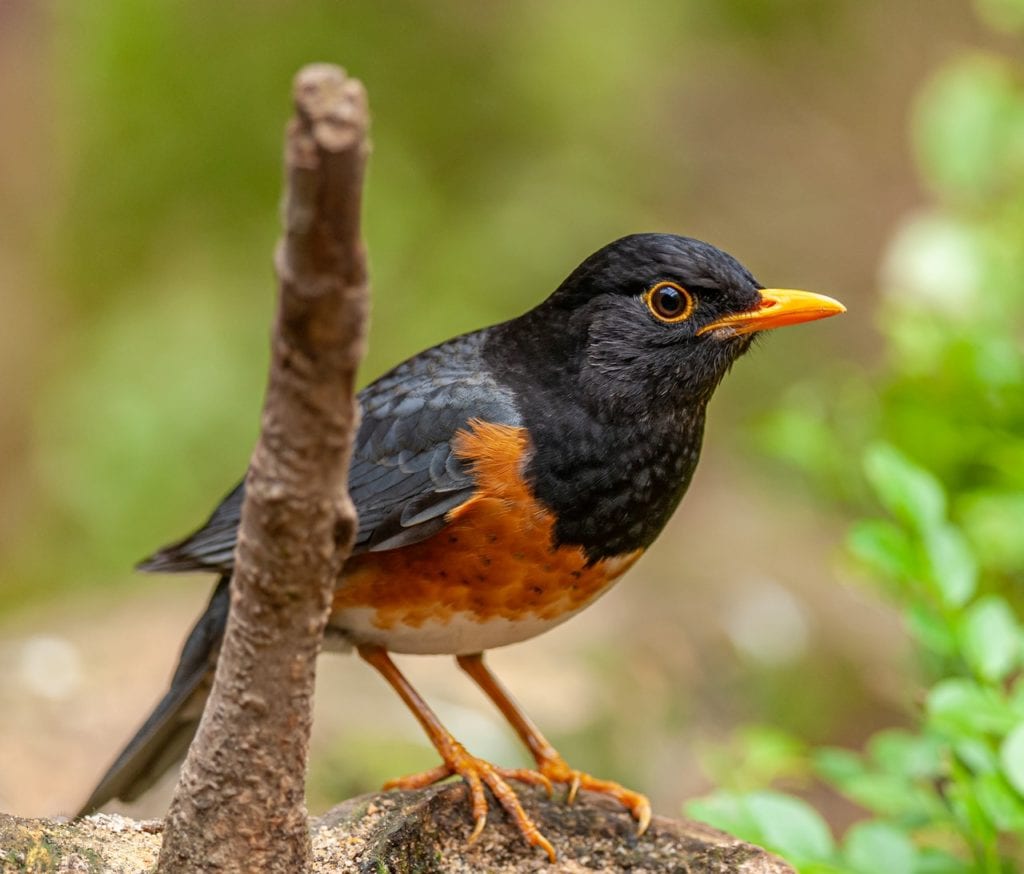
Robin Mating and Breeding
Robins practice serial monogamy. This means that they will mate with one other bird through the breeding season. The next season, they often find a new mate.
Robins nest multiple times in a year. They lay between 3–5 of the most beautiful blue eggs you’ve laid eyes on. Incubation typically lasts 14 days, and then the chicks are born without feathers or sight.
Roughly 2 weeks after they hatch, the chicks are ready to leave their nest and figure out the world on their own. However, some parents continue to watch over them for an additional 2 weeks since they can only fly short distances.
What Do Robins Eat?
Because of their excellent eyesight, robins can spot lots of their favorite foods hidden in the grass. They love to feed on worms, insects, and berries. However, they enjoy any small invertebrates or mollusks. Other common foods that you might find them eating include grasshoppers, grubs, and caterpillars.
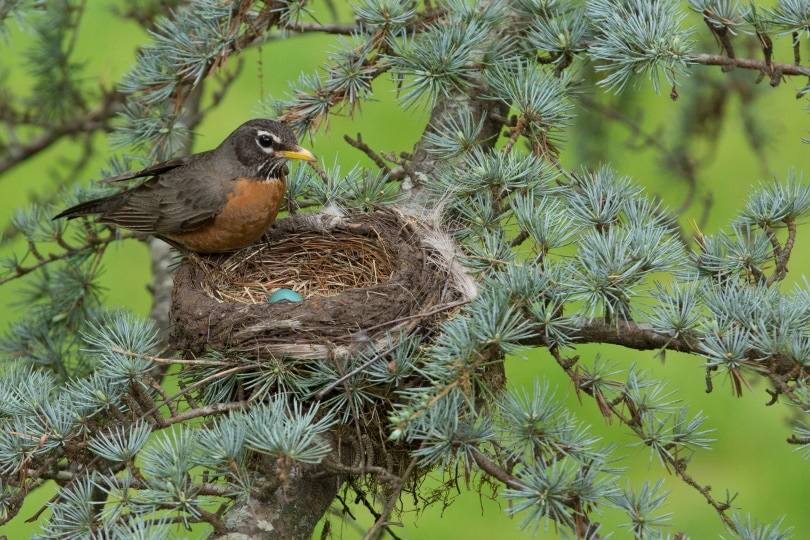

Conclusion
While there are plenty of reasons to love the American Robin, some people think that Michigan could have made smarter decisions when choosing the official state bird. However, that doesn’t mean that the American Robin was a bad choice. There are plenty of people who adore these critters, so much so that two other states also selected it as their state bird. Their lighthearted songs, friendly temperaments, and stunning foliage have made these birds popular for a reason.
Featured Image Credit: chatursunil, Shuttersock
About the Author Hallie Roddy
Hallie is a proud nature and animal enthusiast and has been for as long as she can remember. She attributes her passion for the environment and all its creatures to her childhood when she was showing horses on weekends and spending her weeknights devoting her attention to her pets. When Hallie isn’t using her degree in English with a writing specialization to spread informative knowledge on pets and animals, you can find her snuggled up on the couch reading books or watching nature documentaries with her own pets.
Related Articles:
What Is the Best Binocular Magnification for Hunting? Optical Features Explained
When Were Binoculars Invented? History, Today & Future
How to Clean a Refractor Telescope: Step-by-Step Guide
How to Clean a Telescope Eyepiece: Step-by-Step Guide
How to Clean a Rifle Scope: 8 Expert Tips
Monocular vs Telescope: Differences Explained (With Pictures)
What Is a Monocular Used For? 8 Common Functions
How to Clean a Telescope Mirror: 8 Expert Tips
